American Pit Bull Terrier Dog Breed: Temperament and Breed Characteristics
The American Pit Bull Terrier brings together a unique mix of strength, agility, and a friendly disposition. With a solid build and a variety of coat colors, this dog is a symbol of power and grace.
Despite some negative perceptions, these dogs are known for their deep affection and steadfast devotion to their owners. They are intelligent and eager to please but need consistent training and social exposure to channel their strong personalities.
Pit Bulls are incredibly adaptable, serving in roles like search and rescue and providing comfort as therapy animals, showcasing their wide range of skills.
Key Takeaways
- American Pit Bull Terriers combine strength, agility, and friendliness.
- These dogs exhibit deep loyalty and require consistent training.
- They excel in various roles, including search and rescue.
American Pit Bull Terriers are strong, agile, and friendly. Their loyalty runs deep, but they thrive with consistent guidance. Versatile in roles, they excel from search and rescue to therapy.
Quick Facts
Despite not being recognized by the American Kennel Club, the American Pit Bull Terrier enjoys a notable lifespan of 12 to 14 years. That’s quite impressive for a dog of its size.
Recognized by the United Kennel Club, the breed’s standards describe males as typically measuring 18-21 inches tall and weighing 35-60 pounds, with females being smaller.
Their robust build lends to their agility and strength, qualities that have made them valuable as working dogs throughout history.
American Pit Bull Terriers have secured their place as beloved family pets because of their friendly nature and ability to get along with children when raised with proper socialization.American Pit Bull Terrier Pictures
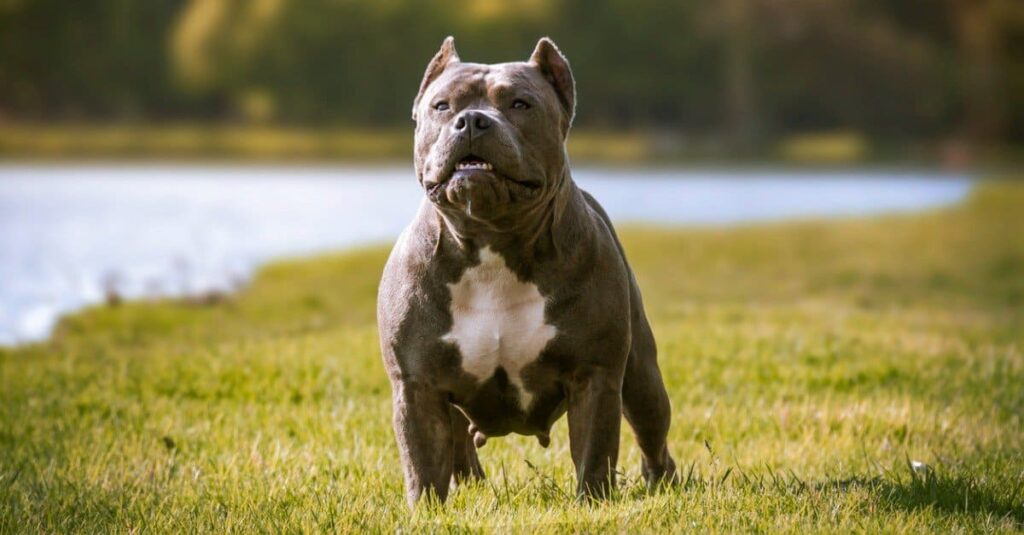
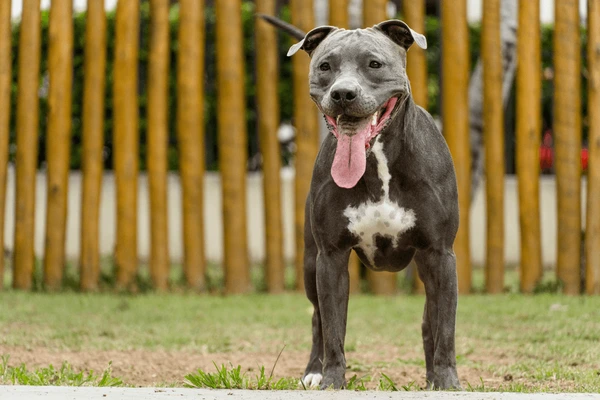
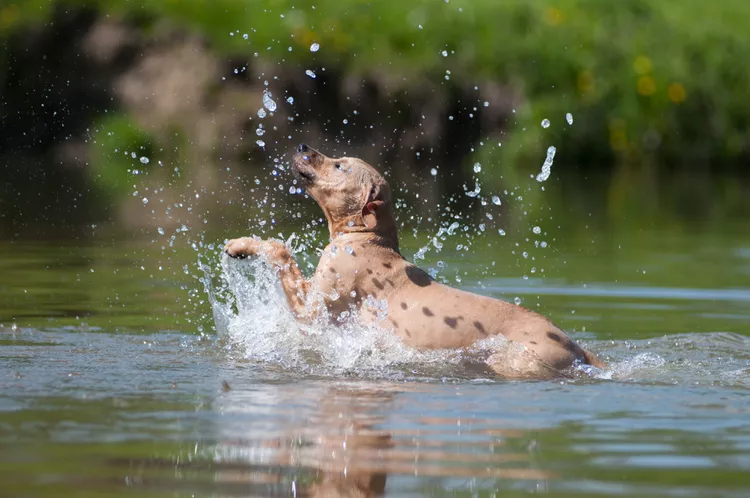
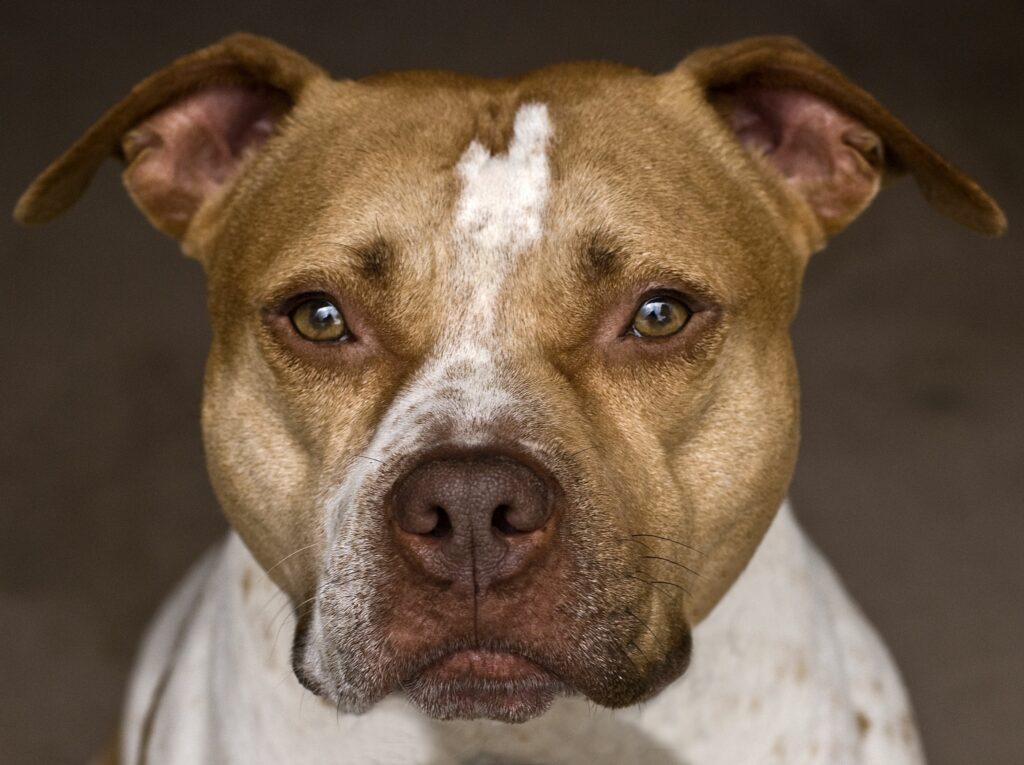
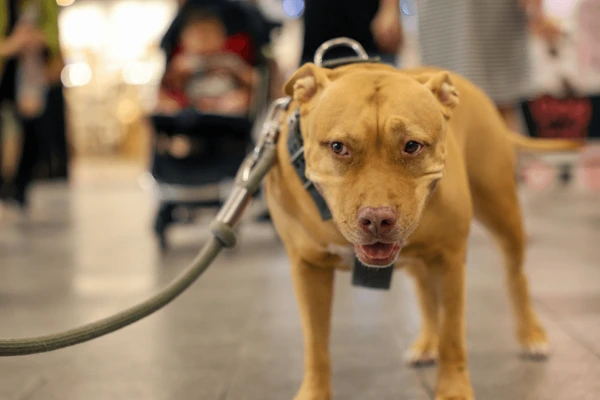
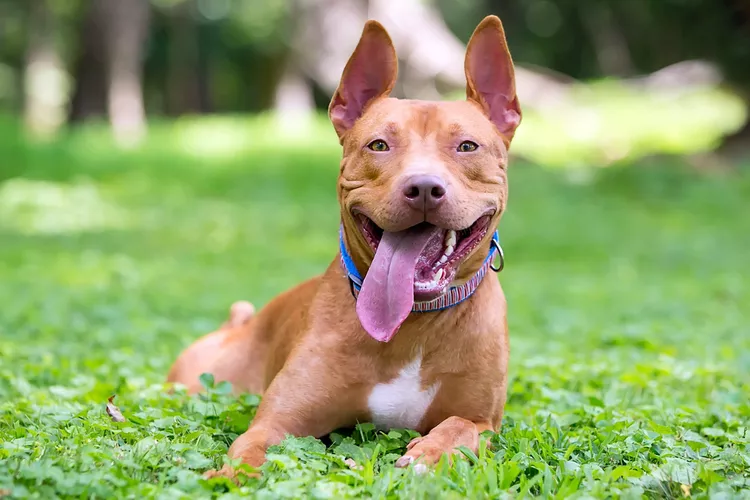
Overview
The American Pit Bull Terrier is known for its strength, intelligence, and devotion. This breed is part of a group known as pit bull types and is recognized for its muscular build, reflecting its Old English Terrier and Bulldog ancestry.
They’re well-loved as pets and are known for being friendly when raised with care. However, they need early obedience training because of their strong personalities and tendency to be aggressive towards other dogs.
Health concerns are significant for the breed, and careful breeding is essential to avoid inherited health problems. With a lifespan typically ranging from 8 to 15 years, the well-being of an American Pit Bull Terrier largely depends on responsible pet ownership and regular vet check-ups.
American Pit Bull Terrier Personality
American Pit Bull Terriers are known for their robust build and friendly demeanor, making them well-suited for companionship and dog sports. Their impressive muscle structure and vitality require regular exercise to stay fit and engaged. These dogs are brilliant, which allows them to excel in training and makes them willing participants in obedience and various service jobs.
Regarding family life, American Pit Bull Terriers can be loyal and protective companions when adequately socialized. Owners should be aware of the breed’s potential health issues and be proactive in their care. Here’s a quick overview of their key characteristics:
| Trait | Implications |
|---|---|
| Physical Strength & Agility | Need for consistent exercise, great for active roles |
| Smart & Responsive to Training | Help from mental challenges can help one learn quickly |
| Good with Families | Benefit from mental challenges can learn quickly |
Responsible ownership is vital for American Pit Bull Terriers to flourish and be valued members of their homes and wider community.
Dog Breed Origins
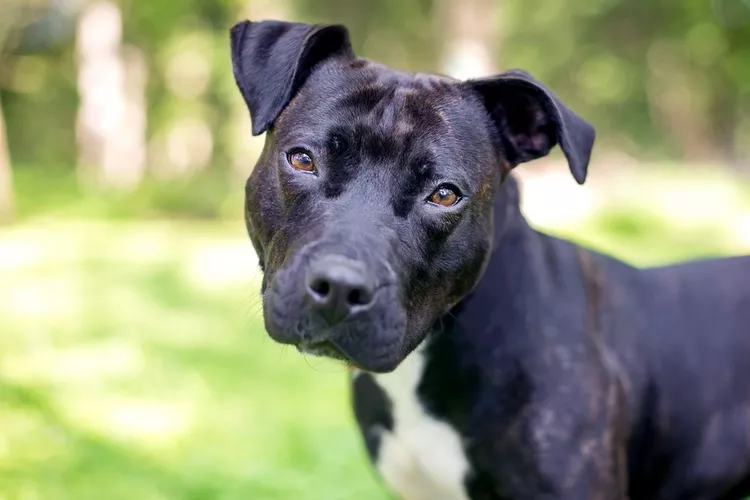
The American Pit Bull Terrier has a rich heritage that traces back to its ancestors, the Old English Terrier and Old English Bulldog. These dogs were initially bred for their agility, strength, and determination, qualities that breeders have focused on for generations.
Historically, the breed played various roles, often shaped by the need for versatile performance. Initially, these dogs were used in bloodsports like bull-baiting, but their roles shifted as they moved to the United States in the 19th century.
Over time, breeders in the U.S. directed their efforts toward refining the breed for more peaceful purposes. As a result, breed-specific registries began recognizing and listing the American Pit Bull Terrier as a distinct breed, acknowledging its unique characteristics and history.
Genetic Ancestry
The American Pit Bull Terrier has a diverse heritage, primarily influenced by the Old English Terriers and Old English Bulldogs. These dogs, now extinct, were known for their strength, agility, and fierce determination, making them ideal for the breed’s early roles in the United Kingdom—breeders aimed to create dogs that exhibited the best qualities and met the emerging breed standards. The focus was on creating dogs adept at fighting, a popular yet controversial sport during that era.
The American Dog Breeders Association played a significant part in fine-tuning the breed standard, which helped shape the breed’s genetic direction. Sharing ties with the American Pit Bull Terrier, the Staffordshire Bull Terrier highlights these two breeds’ shared lineage and genetic connections.
Historical Functions
Research into the American Pit Bull Terrier shows that these dogs were initially bred for bloodsports like bull and bear baiting. They came from a mix of Old English Terriers and Bulldogs and were used in the cruel sport of bull baiting, where dogs fought against chained bulls. When such sports were banned in the United Kingdom in 1835, the breed’s purpose shifted to dog fighting.
As the breed made its way to America with immigrants in the nineteenth century, people began to value their adaptability as working dogs on farms. The American Pit Bull Terrier became known for its strength and protective nature, and it started to serve as a loyal companion, a guardian for families, and a helper in various farm tasks.
Evolution of Traits
The American Pit Bull Terrier is a crossbreed of Old English Terriers and Bulldogs. It has inherited traits like determination, muscular build, and a devoted nature. These dogs were initially bred in England for intense activities such as bull and bear baiting. These activities demanded both stamina and strength. The early ‘bull and terrier’ types, the ancestors of today’s American Pit Bull Terriers, were prized for their terriers’ tenacity and the bulldogs’ muscularity and agility. The breed’s muscular build and energetic character come from this background. The development of these traits was a direct result of their initial jobs, which called for toughness, alertness, and the ability to work well with people.
Physical Dimensions: Dog Breed Profile

The American Pit Bull Terrier is a breed shaped by its history as an all-purpose working dog, which demands a specific blend of strength, agility, and stamina. To measure these traits, the breed standard provides detailed guidelines that help maintain the dog’s effectiveness and overall well-being.
The breed’s size variations must be recognized because they affect the dog’s capability in different tasks and can be linked to specific health issues. Key aspects to consider include weight range, height, body build, and the potential impacts of these factors on the dog’s health.
Breed Standard Measurements
The American Pit Bull Terrier has specific size guidelines. Males should be 18-21 inches tall and weigh between 35-60 pounds; females are slightly smaller, ideally standing 17-20 inches tall with a weight range of 30-50 pounds.
These measurements are vital to maintaining the breed’s characteristic strength and agility, which mirror their historical roles and the expectations placed on them today. The right balance of weight and height is vital, as it ensures the dogs are fit without being overweight or underweight.
Straying from these standards could impact a dog’s health and its ability to compete in breed events. For those who breed and love these dogs, sticking to these standards ensures the breed’s quality and heritage.
Weight Range Variability
The weight range of American Pit Bull Terriers can differ significantly, influenced by factors like genetics, diet, and activity levels. Although these dogs are generally seen as small to medium-sized, their solid build can give the impression that they are more extensive.
Keeping them at a healthy weight is vital for preserving their natural agility and strength. These dogs have many roles, from loving pets to participating in various working dog activities.
To ensure an American Pit Bull Terrier stays in good shape, owners should provide a nutritious diet and consistent exercise that fits the dog’s requirements and lifestyle.
Height Measurement Criteria
American Pit Bull Terriers should be between 17 to 21 inches tall, fitting them into the medium-sized dog category. This particular height requirement is essential for the American Pit Bull Terrier, a breed closely related to the American Staffordshire Terrier, to maintain its well-known muscular build and proportionate body, contributing to their agility and strength.
Keeping to this size range is vital for preserving the breed’s distinctive look and physical capabilities.
Proportionality: Build Considerations
American Pit Bull Terriers need a well-balanced body to match their energetic nature and strength. Their bodies are often more elongated than tall, aiding their flexibility and muscular power.
These dogs must stay active to keep their muscles firm and reduce the risk of health issues like hip dysplasia. Careful attention to their health and body condition is critical, as their physical capabilities hinge on a good mix of genetics and proper care, enabling them to excel in various activities with endurance and determination.
Size-related Health Impacts
American Pit Bull Terriers, with their sturdy build and strong muscles, are susceptible to health issues related to their size that can affect their overall health and activity levels.
Their muscular frame, which aids in their strength, can also put extra pressure on their hips, making them more likely to develop conditions like hip dysplasia. This risk is increased if they’re overfed and become overweight, which adds even more stress to their joints.
They also face the risk of inherited heart defects, which can shorten their lifespan and impact their quality of life.
Owners of these dogs must stay alert and seek regular veterinary care to prevent and manage these health challenges effectively.
Behavioral Traits and Temperament
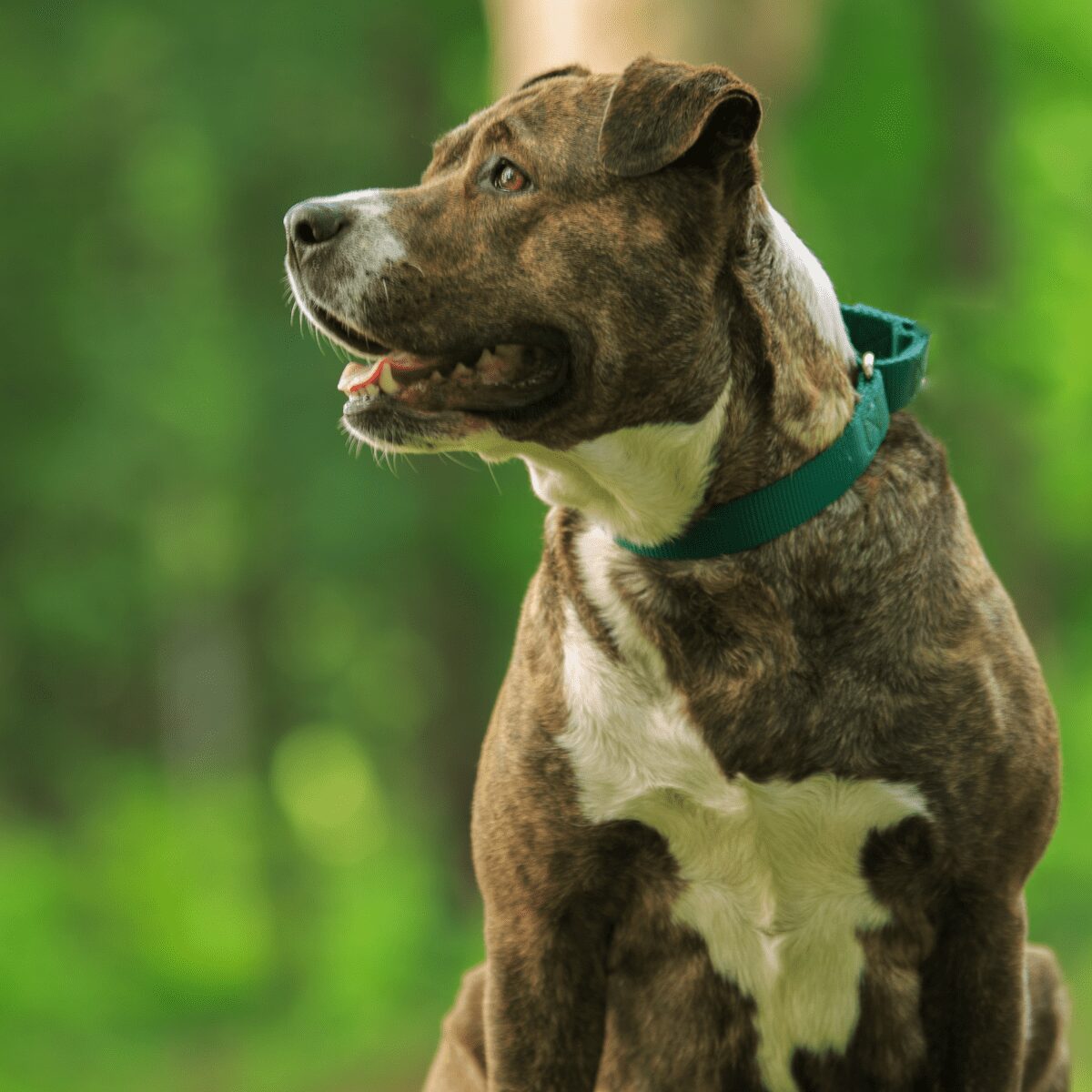
Understanding the American Pit Bull Terrier requires a close look at their behavior. Both genetics and the environment play parts in shaping their actions. To grasp the complexities of their behavior, consider these key points:
Socialization from a young age is vital in developing a balanced temperament. It’s also important to dispel myths about aggression and get to know their actual disposition.
Training methods that tap into the breed’s desire to learn and please their owners can be very effective. It’s wise to manage their natural prey drive to keep peace in homes with other pets.
Lastly, consistent behavioral expectations are necessary for a well-behaved dog companion.
Each aspect contributes to a comprehensive breed understanding, fostering responsible ownership and positive human-canine relationships.
Socialization Importance
Socializing American Pit Bull Terriers is vital for shaping their behavior and helping them become friendly, well-behaved pets. It is essential to reduce their natural inclination for dog aggression and promote peaceful relationships with other animals. Training and positive exposure to various situations can help these dogs use their strength and energy positively, leading to better obedience and a strong bond with their owners.
American Pit Bull Terriers are naturally loving and keen to make their owners happy, making them responsive to early socialization. Dog owners should recognize the value of early exposure to different environments and people for their pets. This understanding is critical for allowing the dogs to express their loyalty and friendly traits in their roles as family members.
American Pit Bull Terriers: Aggression Misconceptions
The American Pit Bull Terrier often gets a bad rap for being aggressive, overshadowing their true potential as loving and well-behaved family companions.
It’s worth noting that aggression towards other dogs can occur in some cases, but this behavior isn’t specific to the breed. A Pit Bull may have a strong energy level and a determined personality, traits common in many terrier breeds.
Media portrayals and specific laws targeting breeds have contributed to a negative image and public misunderstanding, even when studies don’t support these fears.
Good pet ownership practices, like thorough socialization and consistent training, play a significant role in developing a Pit Bull’s friendly temperament and reducing unfair aggression myths.
Training Techniques for Puppy and Adult
Training American Pit Bull Terriers requires an understanding of their distinct behavioral characteristics. For practical training, it’s essential to tap into the breed’s smartness and eagerness to learn, which helps develop a well-mannered pet.
Obedience training benefits from the Pit Bull’s adaptability, mainly when you use consistent positive reinforcement to shape their behavior.
To establish a harmonious relationship, setting yourself as a clear leader with firm but kind guidance is essential. This helps the dog understand the household’s rules and limits.
Incorporating mental challenges in their training takes advantage of their energetic nature. This strategy helps prevent aggressive tendencies and can lessen their chances of experiencing separation anxiety, leading to a more balanced and friendly dog.
Prey Drive Management
Training American Pit Bull Terriers to manage their strong prey drive is crucial. This ensures they interact safely with other animals and adjust to different settings.
Early training and socialization are essential, as they help control their instinctual urges. Engaging them in agility, nose work, and scent tracking is beneficial. These channel their energy and keep their minds sharp, which helps prevent misbehavior due to boredom.
Above all, consistent positive feedback during training is vital for these dogs to become well-behaved family members.
Behavioral Consistency
American Pit Bull Terriers have a strong prey drive but can become obedient and loyal pets with positive guidance. Their enthusiasm and eagerness to please make them ideal for families when supported by consistent training.
Early and thorough obedience training and socialization are vital in favorably shaping a Pit Bull Terrier’s behavior. Owners should engage with their dogs regularly and set firm rules to create a stable environment that boosts their confidence and prevents negative behaviors like aggression.
These steps are essential to develop an American Pit Bull Terrier’s natural traits into reliable and positive actions.
Health Concerns & Management
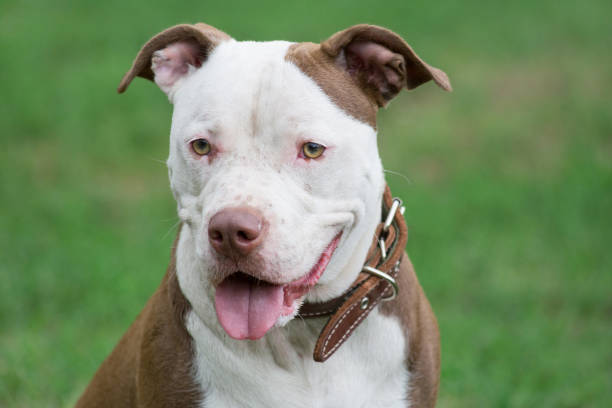
The American Pit Bull Terrier faces a few inherited health conditions that breeders and owners should be aware of to ensure the dogs live long, healthy lives. Regular health checks and a diet tailored to their needs can significantly improve their well-being-. Combining medical treatments with changes in the dog’s lifestyle is often necessary for chronic illnesses.
Early detection and treatment are essential for hip dysplasia, a joint issue common in the breed that sometimes requires surgery. Genetic testing is crucial in identifying risks of canine degenerative myelopathy, an illness affecting the spinal cord. Creating an allergy-friendly environment and considering special diets can help manage skin allergies. Ongoing medication and vigilant monitoring are necessary for dogs with thyroid issues to keep their endocrine system in check. Regular heart health exams are vital for detecting congenital heart defects early on.
Common Genetic Disorders
Responsible breeding and proactive health care are vital to reducing the risk of hereditary conditions like hip dysplasia and degenerative myelopathy in American Pit Bull Terriers.
These dogs may be prone to specific genetic issues, but their health can be managed effectively with early detection through genetic screening recommended by the Humane Society and breed organizations.
Vets play a crucial role in advising dog owners on preventive care and treatments that can significantly improve the lives of these dogs.
Breeders who follow well-researched health protocols can help ensure the vitality and longevity American Pit Bull Terriers are known for.
Preventative Health Measures
Preventative Health Measures for American Pit Bull Terriers
Regular health check-ups and preventive care are vital to keeping American Pit Bull Terriers healthy, mainly to prevent common issues like hip dysplasia and degenerative myelopathy. Being alert to allergies that may cause skin problems is also vital for their comfort and health.
Early detection of heart defects and thyroid conditions through proactive screening can make a big difference in managing these issues effectively.
A well-rounded approach that includes a nutritious diet and plenty of exercise is the foundation of good health for these dogs.
It’s also wise to consider pet insurance, which can help cover the costs of unexpected health problems and contribute to a better quality of life for your pet.
Managing Chronic Conditions
For American Pit Bull Terriers, tackling hereditary health issues like hip dysplasia and degenerative myelopathy promptly and consistently is vital to slowing their progression. Effective care plans focus on reducing symptom severity and ensuring the dogs maintain a good quality of life.
Skin allergies, which environmental factors can worsen, require special attention due to the breed’s short fur. Using the proper diet to support skin health is vital in controlling allergies.
Customized exercise routines also play a crucial role; they promote joint health and aid in weight control, which helps to relieve pressure on affected joints, contributing to the overall well-being of these dogs.
Maintenance & Well-being
Caring for American Pit Bull Terriers means paying attention to their unique health and dietary needs to ensure they live long, happy lives. Owners should focus on routine health check-ups and a diet crafted for the breed’s specific requirements. Keeping these dogs physically active and mentally engaged is critical to their well-being-.
Their meals should include nutrients that support muscle and joint health, while regular coat brushing will keep their fur shiny and reduce excess hair in your home. Due to their energetic nature, American Pit Bulls benefit from consistent exercise schedules. Frequent health screenings help catch any potential issues early, and activities that challenge them mentally keep their minds sharp and aid in their ability to adapt socially.
Nutritional Requirements
American Pit Bull Terriers need a protein-rich diet to keep their muscles strong, following the Association of American Feed Control Officials (AAFCO) guidelines. High-quality dog food that meets these standards is vital for their health, especially given their active lifestyles and regular exercise routines.
Proper protein intake is vital for muscle repair, growth, and overall health, including keeping their coat in good condition. It’s also necessary to monitor their calories to avoid weight gain, as Pit Bulls can quickly become overweight.
Customizing their diet based on their needs, considering factors such as activity level, age, and health, is essential for their health and happiness.
Grooming Essentials
Taking good care of your American Pit Bull Terrier is vital for their health and happiness. Regular brushing with a stiff-bristled brush keeps their coat shiny and helps spread their skin’s natural oils, especially when they shed more.
Cleaning their ears with a cotton ball wards off infections, and keeping their nails short prevents discomfort and problems with walking. Make it part of your routine to look for unusual skin conditions that may signal health issues.
Staying on top of these grooming tasks significantly affects your dog’s overall condition and quality of life.
Exercise Regimens
Exercise is vital for an American Pit Bull Terrier’s health and happiness. Their natural agility is a critical trait that lets them shine in activities demanding speed, strength, and coordination. Creating obstacle courses with climbing elements can play to their strengths and keep them engaged. It’s essential to have secure fencing to keep them safe while they enjoy their freedom during playtime.
Experts suggest dedicating at least an hour daily to exercise to meet their energetic needs. This routine curbs unwanted behaviors promotes healthy joints and maintains their muscular build. More than just physical activity, it’s about enhancing their quality of life.
Health Screenings
Owning an American Pit Bull Terrier means taking responsibility for their health. Yearly check-ups are vital in spotting potential issues like hip dysplasia, thyroid problems, and heart conditions, which are particularly prevalent in this breed. Acting early on these health screenings can significantly affect your dog’s quality of life.
Good breeders will show their commitment to the breed’s health by providing clearances for these genetic issues. Avoiding these health concerns is critical to ensuring your American Pit Bull Terrier enjoys a long and active life.
Behavioral Enrichment
American Pit Bull Terriers are full of energy and need a well-thought-out plan for behavioral enrichment to keep them happy and healthy. These dogs love to climb and might try to get out if they’re bored, so it’s vital to have secure fencing.
Tailor their enrichment activities to their love of learning and their instinctual desire to chase by including exercises that test their body and mind. Agility training is excellent for Pit Bulls because it uses their energy and helps with obedience and getting along with others.
Always use positive reinforcement with these dogs because it fits their eager-to-please nature and encourages good behavior. A balanced enrichment routine is critical to helping these dogs live harmoniously within their surroundings.
Dietary Requirements
American Pit Bull Terriers have specific dietary needs that must be met to keep them healthy and active. It’s vital to choose high-quality foods that balance proteins, carbohydrates, and fats to match their energetic lifestyle. Keeping an eye on their weight is also crucial for their overall well-being and lifespan.
These dogs do well with lean proteins for strong muscles and repair and complex carbohydrates to fuel their energy throughout the day. Including essential fatty acids is vital for maintaining a shiny coat and healthy skin. Don’t forget a mix of vitamins and minerals to support your immune system and fiber-rich foods for optimal digestive health.
Nutritional Needs Assessment
Creating an appropriate diet for an American Pit Bull Terrier is vital for their overall health and managing common health concerns. They need a diet rich in high-quality protein to maintain their muscle strength and satisfy their active lifestyle. Including nutrients that support skin and coat health is critical since they’re prone to allergies and skin issues.
Ingredients that support joint health are beneficial because hip dysplasia is a concern for this breed. Monitoring their fat and calorie intake is necessary to prevent obesity.
Working with a vet to tailor their diet will help keep an American Pit Bull Terrier healthy and full of life.
Ideal Food Types
American Pit Bull Terriers thrive on a balanced diet with lean meats, whole grains, and vegetables. These energetic and muscular dogs need food that keeps them active without putting on extra weight. Experts like the Association of American Feed Control Officials suggest that dog foods should be low in fat and calories to help prevent weight gain, which this breed is prone to.
Pit Bull Terriers need to get plenty of high-quality protein to maintain their strong muscles. For young Pit Bull puppies, their meals should support healthy growth and development.
Always consult a veterinarian to create a diet personalized to your dog’s unique needs and supports their overall well-being.
Managing Weight Control
Monitoring your American Pit Bull Terrier’s diet is crucial in preventing weight gain and related health issues. These solid and athletic dogs typically range from 30 to 75 pounds and thrive on a diet that’s both nutritious and approved by the Association of American Feed Control Officials (AAFCO).
Regular exercise and a well-maintained diet are necessary to keep them in top shape.
Keep a close eye on your dog’s physical condition and adjust their food portions when needed. Providing a secure area for exercise will help them stay active and fit, which is especially beneficial if they participate in performance events.
Consistent management of their diet and exercise will ensure your American Pit Bull Terrier remains healthy and at an ideal weight.
